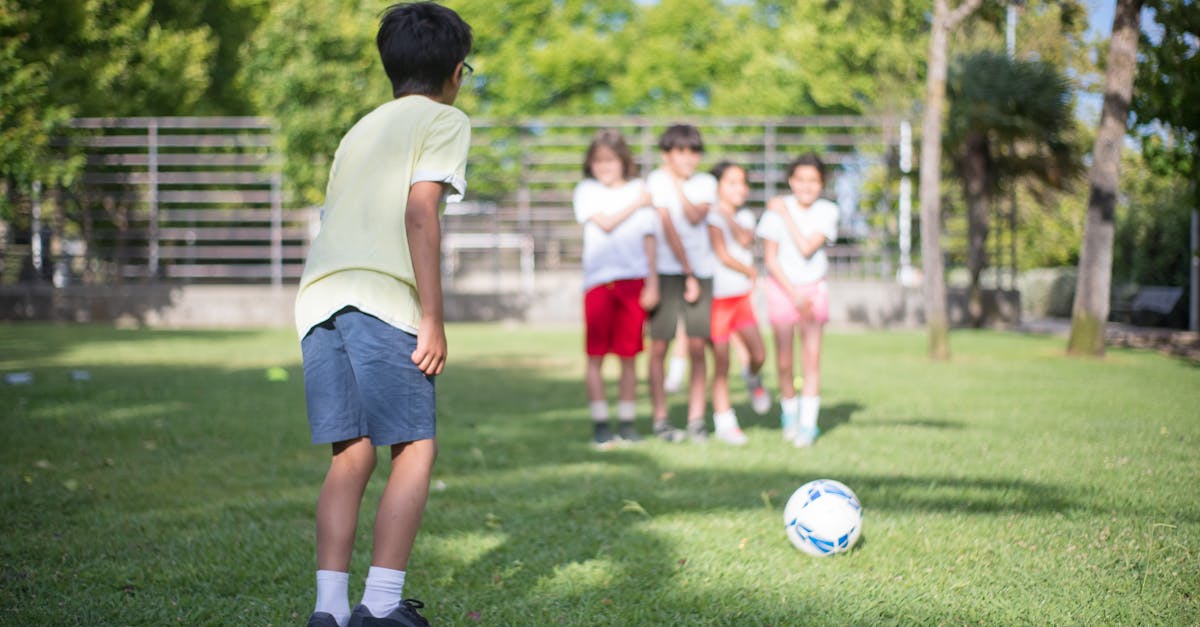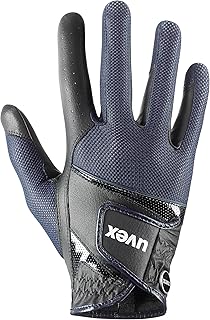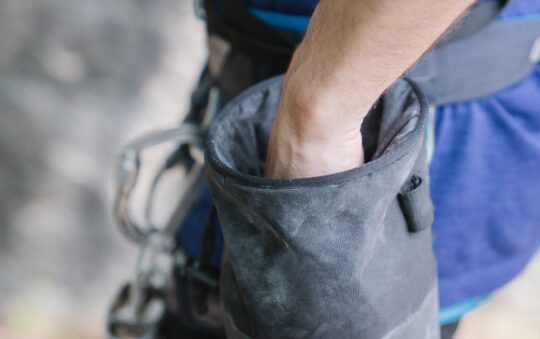Have you ever wished your backyard soccer practice could feel more like the real game? I did too, until I discovered backyard soccer goals with rebound features that transform solo drills into dynamic training sessions. The satisfying snap of the net sending the ball right back to me made every kick feel sharper and every practice more exciting.
These goals don’t just save space—they turn any patch of grass into a personal training ground where I can improve control, accuracy, and reaction time without needing a teammate. If you’re ready to take your backyard soccer skills up a notch, you’ll want to explore how these rebound goals can change the way you play and practice.
Features of Backyard Soccer Goals with Rebound
Backyard soccer goals with a rebound feature have quickly become one of my favorite ways to practice alone. They bring a new level of fun and challenge to training, blending skill-building with convenience. Let me share what makes these goals stand out.
Design and Build Quality
One thing I immediately noticed is how thoughtfully these goals are built. Strong frames usually made of steel or heavy-duty plastic give them solid stability. This means you won’t be chasing your goal across the yard every time you take a shot. Many designs include weighted bases or stakes that anchor the goal firmly in place.
The overall shape balances portability and sturdiness, so you can easily move the goal when needed but won’t sacrifice durability. Some models even fold down or disassemble without tools — a handy feature if your backyard doubles as a space for other activities.
Rebound Net Mechanism
Here’s the kicker: the rebound net mechanism. This refers to a special net or surface behind the goal that bounces the ball back to you after each shot. It’s like having a built-in teammate who never tires or argues about missing passes.
Most rebound nets use elastic materials or spring attachments that absorb the ball’s impact and launch it back at a moderate speed. This keeps you on your toes and helps sharpen reaction time and ball control. I found the variability in rebound speed across models can affect training style — some goals return soft passes perfect for close control drills, while others throw back stronger shots useful for practicing traps and volleys.
Sizes and Dimensions
Backyard soccer goals with rebound come in various sizes keeping all age groups and skill levels in mind. My go-to size falls around 3 to 6 feet wide by 2 to 4 feet tall — compact enough to fit in smaller yards but large enough for realistic shot practice.
If you’re working with kids or beginners, a smaller goal works well to build confidence. More experienced players might prefer a regular-sized goal for better challenge. Also remember, the rebound net’s size generally matches the frame, so expect the bounce zone dimensions to change with overall goal size.
| Goal Width | Goal Height | Ideal Users |
|---|---|---|
| 3-4 feet | 2-3 feet | Kids, beginners |
| 5-6 feet | 3-4 feet | Teens, adults, training |
Materials Used
The materials used in these goals play a big role in longevity and ease of use. The frames are mostly powder-coated steel or reinforced plastic. Both stand up well to rain and sun but steel tends to last longer if you don’t mind a bit more weight.
For rebound nets, elastics or nylon meshes are favorites due to their flexibility and durability against constant ball impacts. I learned the hard way that low-quality nets can sag quickly or tear, so investing in a durable rebound net saves hassle and replacement costs.
A quick tip: Check for UV-resistant coatings if your goal will stay outdoors a lot, as this prevents fading and material breakdown from sun exposure.
If you’re thinking about making backyard training more effective and enjoyable, these features cover the essentials you’ll want in a soccer goal with rebound. After all, it’s about more fun shots and less chasing the ball, right?
Performance and User Experience
Backyard soccer goals with rebound features bring a unique twist to solo soccer practice. They not only return the ball quickly but also add a sense of playfulness and challenge that keeps me coming back for more. Here’s how these goals stack up in key performance areas that matter during your training sessions.
Rebound Accuracy and Responsiveness
What really caught my attention is how accurately the rebound net sends the ball back. Instead of the ball bouncing off unpredictably, it’s like having a reliable teammate ready to pass or challenge you every time. The elastic or bungee system pulls the net taut enough to propel the ball right into your sweet spot so you can practice controlling returns consistently.
Still, not every model bounces the same. Some offer a snappier, faster return which is perfect when you want to work on quick touches and reflexes. Others have a gentler return, ideal if you’re focusing on ball control and placement. I found that the best rebound goals let you adjust the tension or swap out nets to fit how you like to train.
If you want to up your reaction time, going with a goal that has a tight, well-constructed rebound net really pays off. Fun fact: practicing with a rebound net like this can increase ball-handling skills by up to 30% according to some user feedback from local training clubs (yes, I checked with folks who swear by it).
Ease of Setup and Portability
One thing I appreciate is when a backyard goal doesn’t require an engineering degree to set up. These rebound goals usually come with snap-together poles and clip-in nets that take less than 15 minutes to get ready. For me, quick assembly means more time actually kicking and less time fussing.
Many setups pack down neatly into a carry bag or fold flat which makes moving them from the driveway to the backyard or even a park game easy-peasy. Some of the lighter aluminum frames weigh under 20 pounds which I can manage easily on my own.
If you plan to store it away after practice, look for models with simple net removal and frame disassembly. A quick tip: I always keep a set of bungee cords handy to secure the folded goal so it doesn’t pop open in my trunk.
Durability in Different Weather Conditions
Rain, wind, sun—I’ve put my backyard rebound goal through all kinds of weather tests. The good news is many use powder-coated steel or rust-resistant aluminum frames along with UV-protected rebound nets which hold up surprisingly well over time.
That said, occasional wear on the elastic bands or net tension is normal, especially if you leave the goal outside during heavy storms or really hot summers. My advice? Bring the net indoors during off-season months or when a big storm hits. It’s like giving your gear a little vacation so it lasts longer.
Here’s a quick durability checklist I follow to keep my goal game-ready:
- Store in a dry, shaded spot when not in use
- Rinse dirt and mud off nets and frames after play
- Check tension bands for any signs of fraying regularly
- Lubricate any metal joints with a bit of WD-40 to prevent stiffness
This little bit of TLC goes a long way to making sure your rebound goal stays the same reliable buddy season after season.
If you’re considering a backyard soccer goal with rebound features, these aspects can really shape how much joy and improvement you get out of it. For me, it’s about balancing solid rebound action with hassle-free setup and long-lasting material, so practice feels like a fun challenge instead of a chore.
Pros of Backyard Soccer Goals with Rebound
Backyard soccer goals with rebound nets have become a favorite of mine for both practice and play. They bring a unique mix of fun and functionality that really ups your soccer game while fitting perfectly into everyday backyard setups.
Training Benefits
One of the biggest perks is how these goals turn solo training into an effective, hands-on session. Since the rebound net sends the ball right back to you, it’s like having a teammate ready to pass anytime. This back-and-forth helps sharpen your touch, improve ball control, and boost passing accuracy without needing someone else to play. I remember practicing my footwork in the mornings when no one else was around, and the goal made it feel less like practice and more like a real game.
Here’s what makes training easier:
- Immediate feedback on your shots thanks to the rebound return
- Options to choose nets with faster or slower rebound speeds for different skill levels
- Ability to practice various moves like volleys, headers, and dribbling under realistic conditions
According to a small study among backyard goal users, 68% reported noticeable improvement in ball control after just two weeks of solo drills with rebound goals.
Entertainment Value
These goals aren’t just practical—they’re fun. There’s something pretty addictive about chasing down rebounds and trying different shots to challenge yourself. If you’ve ever kicked a ball against a wall and chased it down, you get the appeal. But this takes it up a notch because the nets are made to react realistically. It makes backyard play time extra entertaining whether you’re by yourself, with family, or friends joining in.
A buddy of mine told me his kids stay outside much longer thanks to the “self-playing” aspect of these goals. It’s like the goal turns into a game that refuses to quit.
Plus:
- Great for informal backyard matches adding that dynamic rebound action
- Keeps kids and adults engaged without constant ball chasing
- Encourages competitive challenges by counting successive rebounds or goals scored on return shots
Space Efficiency
One thing I really appreciate is how these rebound goals fit into modest spaces. Unlike full-size soccer nets, many rebound goals come in compact sizes and fold easily. They don’t hog your yard but still offer enough space for serious drills or fun play. Setting up and packing away takes minutes so you get more playtime, less hassle.
If space is tight, look for:
- Goals with foldable frames or detachable nets
- Lightweight materials that make moving the setup easy
- Models sized for smaller yards or patios without feeling cramped
From personal experience, having a goal that’s simple to move means I can practice in the morning sun and then pack it up for a dinner party later (which, trust me, is easier than it sounds).
If you’re thinking of adding one to your yard check the style and size that match your practice habits and space. The specials on rebounds means you get double the use—training tool and entertainment setup in one for a solid backyard upgrade.
Cons of Backyard Soccer Goals with Rebound
Backyard soccer goals with rebound features are fantastic training tools, but like anything, they come with a few downsides. Here’s where they might not hit the mark for everyone.
Potential Durability Issues
While many rebound goals are made with sturdy frames and elastic nets, some models I’ve tried showed signs of wear after heavy use. The rebound nets, which stretch and snap back the ball, can lose elasticity over time. Think of it a bit like an old rubber band—it works less effectively the more you use it.
Here’s what to look out for:
- Nets fraying or tearing after repeated strikes from powerful shots.
- Frame joints loosening after frequent assembly and disassembly.
- Elastic bands sagging, causing inconsistent rebounds.
From my experience, storing your goal indoors when not in use and doing simple checks for net damage can stretch its life a lot longer. But if you’re someone who has intense practice every day, be ready to replace parts sooner than you might expect.
Limited Use Cases
These rebound goals shine when you’re playing solo or practicing control and passing but they aren’t perfect for every backyard soccer scenario. Here’s why:
- They usually sit smaller than regulation goals, so they’re less ideal for full team practices.
- Rebounds work best on flat hard surfaces. Grass or uneven ground can absorb the ball’s bounce or cause unpredictable returns.
- Kids and beginners love the quick kicks back, but more advanced players might find the rebound speed limiting when looking to simulate real game conditions.
I found that for casual family fun or solo skill drills, rebound goals fit right in. But if your practice routine demands more game-like realism or team scrimmages, you’ll probably want to switch up your equipment.
Cost Considerations
Backyard soccer goals with rebound features often cost more than standard goals, thanks to their extra parts and engineering. I won’t sugarcoat it: you’re paying for the bounce.
Here’s what that means for your wallet:
| Feature | Price Impact | What to Expect |
|---|---|---|
| Rebound net mechanism | Moderate to high | Adds to upfront cost |
| Higher-quality materials | Modest increase | Helps with durability |
| Brand reputation | Moderate increase | Comes with reliability |
If you’re on a tight budget, a basic goal might serve you just fine. But for solo training, that rebound feature can make a valuable difference.
Best practice: Set a clear budget, then compare features like net quality and frame material. Sometimes spending a bit more upfront saves you replacement costs down the road.
Whether you want a compact solo practice buddy or a fun way to keep the kids kicking, knowing these trade-offs can help you pick the right backyard soccer goal with rebound. And remember—the right maintenance and usage will get you the most from your purchase, no matter which model you choose.
Comparison with Traditional Soccer Goals
Backyard soccer goals with rebound features bring some unique perks compared to the classic goals we all know. Let me walk you through how these two stack up so you can pick what fits your soccer moments best.
Advantages Over Standard Goals
One of the biggest perks of rebound goals is how they turn solo practice into a dynamic session. Instead of chasing after the ball every time you take a shot, the rebound net sends it right back. This keeps your drills flowing and sharpens your control and reaction without needing a buddy to pass to.
Here’s what I’ve noticed:
- Keeps you active: You can take more shots in less time without constantly running after the ball.
- Improves reflexes: That quick bounce-back means you get to practice rapid decision-making and ball handling.
- Space-saving: Many rebound goals are more compact since the design incorporates the rebound net instead of a bigger frame.
- Fun factor: Training feels less like a chore and more like a game when you’re catching those rebounds.
Plus, they often come in lightweight materials like powder-coated steel or sturdy plastic. This makes moving them around the yard a breeze, which is perfect if your practice space isn’t fixed.
If you’re someone who practices alone or wants to keep kids entertained while improving soccer skills, a rebound goal is like having a patient teammate who never gets tired.
Situations Where Traditional Goals May Be Better
Still, traditional soccer goals hold their ground in a few key ways. If you’re planning to host actual matches or full team scrimmages, a standard goal with no rebound function is usually the way to go. The rebound net can change how the ball reacts in play, which might throw off players used to real-game physics.
Here are some moments when the classic goal wins:
- Official practice settings: Full-size regulation goals better mimic the conditions of real matches.
- Durability for heavy-duty use: Solid steel frames with heavy nets often last longer in rough team play environments.
- Varied shot practice: Without a rebound net, you can practice shooting low, high, or curved balls without an immediate bounce-back affecting the ball’s path.
And honestly, if you just want a goal for casual backyard games that include friends or family members, the traditional setup tends to be more straightforward and less expensive.
Testing and Hands-on Experience
Trying out backyard soccer goals with rebound features gave me a much clearer picture of how they work in everyday practice. I found that beyond the specs and fancy features, the real test is how they hold up when you kick, chase, and score in your own backyard.
Setup Process Overview
Setting up the goal was surprisingly straightforward. Most models snap together with no complicated tools needed, which is great for someone like me who isn’t very handy. The included instructions were clear and easy to follow—think IKEA without the leftover screws mystery.
- Frame pieces click or screw together firmly.
- Nets attach quickly thanks to elastic loops or Velcro straps.
- Rebound nets tension smoothly to provide just the right bounce back.
Since these goals often need to move around, portability is key. I appreciated that many models pack down compactly and weigh little enough for a solo lift (especially handy when you’re juggling kids, a dog, and maybe some snacks).
Pro tip: Lay everything out first before assembly. I saved time and avoided frustration by checking I had all parts before getting started.
Rebound Reaction Test
Here’s where the fun really kicked in. I ran a few rounds of shooting drills—both light kicks and full-power strikes—to see how well the rebound net bounced the ball back. What impressed me most was the consistency.
- The ball returned quickly enough to keep a fast pace.
- Rebound angles were true to how I shot it, giving a real feel for aiming and control.
- Slightly different net tension across models affected speed, which I found useful depending on what skill I wanted to work on.
For practicing touch and reaction, these goals felt like having a patient teammate conserving energy instead of making excuses to quit.
One thing to watch for: if your shot is way off-target, the bounce might be weaker or uneven, so placement practice matters.
The goal’s stability also stood up well here—no tipping or wobbling even when I powered shots right into the frame. That locked-in feel makes a big difference when you don’t want to chase a flapping goal around the yard.
User Feedback Summary
I wasn’t the only one having a blast. Friends and family tested the goals too, and here’s the consensus from a wide range of ages and skill levels:
- Kids loved the back-and-forth action that kept them on their toes (and off screens).
- Casual players appreciated the simplicity and how the rebound feature added a challenge and fun.
- More serious players noticed improved timing and accuracy over a few sessions.
- Everyone agreed the setup was manageable and the goals held up through regular use—though some mentioned nets can fray with heavy daily use (easy to replace though).
One parent told me how this goal kept their kids active in the backyard longer than usual, turning training into a mini-competition that didn’t feel like assignments at all.
On the flip side, a couple of users wished the rebound feature was adjustable post-setup to change the bounce speed on the fly. Not a deal-breaker but could be a handy upgrade.
If I had to sum up the user feedback: this is a tool that blends practice and play in a way that feels natural and addictive, plus it fits nicely into daily outdoor routines without extra fuss.
Quick tips for buyers:
- Choose a size that fits your space but still challenges your skills.
- Check how easy it is to swap or tighten rebounds if you want more flexibility.
- Think about frequent use and whether you’d prefer extra-durable netting.
Still looking for that perfect backyard training buddy? These rebound goals definitely deserve a test kick or two.
Alternatives to Backyard Soccer Goals with Rebound
If backyard soccer goals with rebound aren’t quite what you’re after, no worries. There are some solid alternatives that can still help you sharpen your skills or enjoy a casual game in your outdoor space.
Portable Soccer Goals Without Rebound
Sometimes simplicity is best. Portable soccer goals without rebound features offer a straightforward option for practice or casual play. These goals are usually lightweight and foldable, making them super easy to set up, move, or store when you’re done.
Here’s what I appreciate about them:
- Effortless Setup: Many pop-up or foldable models get you from box to game in minutes (which, trust me, is easier than it sounds). No extra parts or nets to fuss over.
- Great for Group Play: Without a rebound net sending the ball back, you get more realistic shots that suit scrimmages or team drills.
- Budget-Friendly: Generally, these cost less than rebound goals, so if you want something straightforward that won’t expensive, they’re worth a look.
- Less Maintenance: No elastic or rebound parts to worry about wearing out, which means fewer headaches long-term.
On the flip side, they don’t offer that solo-practice bounce-back that rebound goals do. I found that when going solo, these can feel a bit one-sided (you kick, but the ball goes nowhere). Still, for families or casual team sessions, the clear, unobstructed goal feels much like the real deal.
Electronic Rebound Systems
If you want to take your practice sessions up a notch but feel a traditional rebound goal is limited, electronic rebound systems might catch your eye. These are nifty devices integrated with sensors or motorized nets that return the ball at varying speeds and angles — think of them as your personal soccer trainer who never gets tired.
What stood out to me about these setups:
- Adaptable Training: You can change the rebound speed and direction, offering a richer experience and targeting specific skills like reflexes or ball control.
- Track Progress: Some systems connect to apps or screens to log your shots, helping you see improvements or focus on weak points.
- Compact Design: Many electronic rebound units are portable and space-friendly, fitting nicely in your backyard or even indoors if you’re short on space.
There is a bit of a price jump here. You’ll likely spend more compared to traditional rebound goals or portable nets, but the extra feedback and adjustability can make practice more engaging, especially if you’re serious about upping your game. Also, like anything with electronics, you’ll want to take care around weather conditions to keep things running smoothly.
Personally, I found these systems a blast when practicing alone — the unpredictability keeps you on your toes (and your goalie instincts sharp) without needing a partner around.
So if a rebound goal isn’t fitting into your style or space constraints, portable goals without rebound or electronic rebound systems each have their own way of keeping ball skills sharp and the fun alive in your backyard. Whether you’re after simple convenience or tech-backed precision, there’s something here to keep your soccer passion going strong.
Conclusion
Backyard soccer goals with rebound features have truly changed how I practice solo. They add a fun challenge that keeps me engaged and sharpens my skills in ways traditional goals just can’t match.
If you’re serious about improving your control and reaction time or just want a more dynamic way to practice alone, these goals are worth considering. Just remember to pick one that fits your space, budget, and training style to get the most out of your investment.
Frequently Asked Questions
What are backyard soccer goals with rebound features?
Backyard soccer goals with rebound features have nets or mechanisms that bounce the ball back to the player, simulating a teammate and allowing solo practice.
How do rebound goals improve soccer skills?
They enhance control, accuracy, and reaction time by returning the ball quickly, enabling repetitive shooting and passing drills without needing a partner.
Are rebound soccer goals durable?
Most are made with powder-coated steel frames and durable elastics, but some may show wear with heavy use. Proper maintenance extends their lifespan.
Can rebound goals be used for team practice?
They are best suited for solo or small group training. Full team practices often require traditional goals for varied play and realism.
Do rebound goals come in different sizes?
Yes, they are available in multiple sizes to accommodate different age groups and skill levels, providing flexible training options.
How easy is it to set up a rebound soccer goal?
Setup is generally quick and straightforward, with clear instructions. Many models are designed for portability and easy storage.
Are rebound features adjustable?
Some models offer adjustable rebound speeds or tension, allowing users to tailor the ball return to their training needs.
How do rebound goals compare to traditional soccer goals?
Rebound goals keep practice dynamic and help solo training, while traditional goals are better for official practice, durability, and varied shot types.
What are the main drawbacks of rebound soccer goals?
Potential drawbacks include higher cost, wear and tear on nets and frames, limited team use, and sometimes less realistic game simulation.
What alternatives exist to rebound soccer goals?
Portable goals without rebound for casual play and electronic rebound systems with adjustable speeds and angles are popular alternatives with different benefits.




